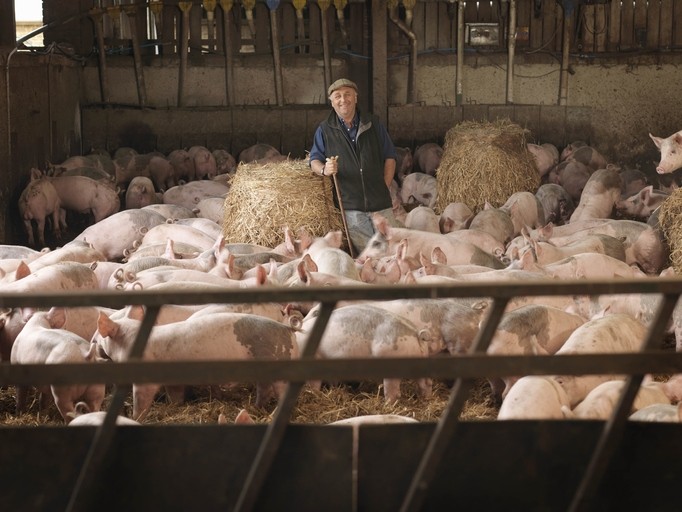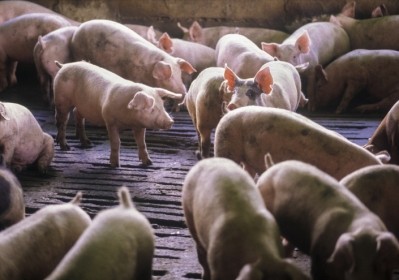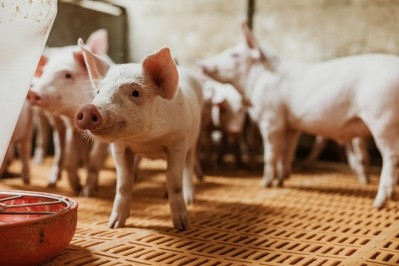Pig welfare: Liquid feeding systems mitigate ear and body bites compared to dry diets

The researchers used data from a field survey of 85 Norwegian farms to investigate the associations between group size, area per pig and feed type with selected welfare and performance indicators in finishing pigs.
"On each farm we recorded the number of pigs per pen, the area per pig and the type of feed used."
Writing in Applied Animal Behaviour Science, the researchers outlined how the proportion of pigs with bites on the ears and body decreased as the number of pigs per pen increased, but this was not the case for bites on the tail.
The proportion of pigs with bites on the body decreased with increasing floor space per pig.
Liquid feeding system
The research team also saw that there was a lower proportion of pigs with ear and body bites in pens with a liquid feeding system compared with a dry feeding system, and a similar trend was reported for tail bites, but daily weight gain was higher with dry feeding.
Any evaluation of the impact of different group sizes and densities on pig welfare must include an assessment of tail biting, especially in Norway where tail docking is not allowed. Tail biting results in bleeding, shortened (compared to a full tail) or missing tails (entire tail missing), which are painful and associated with stress and reduced growth rates, reported the authors.
"The use of dry feeders may have created queues and competition around the feeder, even though concentrates were available ad libitum, as only five to seven pigs could eat at a time."
Liquid feeding systems, which allow all pigs to eat at the same time, are generally expected to reduce competitive aggression, said the scientists.
The dry feed resulted in slightly higher daily weight gain per pig in this study, averaging 43 grams per day in the finishing period.
"Although feeding space may be limited in a dry feeding system, it is an easier system to manage and the quality of the feed is usually good."
Liquid feeding systems require more management in terms of hygiene and data input, acknowledged the experts.
"Regular cleaning of the tank and pipework, combined with regular adjustment of the feed curves to match the growth of the pigs, is important. If this is not done regularly, it will affect the growth and feed conversion ratio of the herd."
More sociable pigs
The authors said it appeared that pigs switched to a less aggressive social strategy when moved from small (18 pigs) to large (108 pigs) groups. "Pigs reared in larger groups also tend to be less aggressive when meeting unfamiliar pigs in a new pen."
In summary, the researchers saw that pigs in larger groups showed improved welfare, as evidenced by a lower prevalence of bite marks. In addition, increased floor space per pig and the provision of liquid feed in troughs were correlated with reduced bite mark incidence.
They acknowledged that their data set represented density values skewed towards the minimum space per pig required by legislation. Consequently, the implications of the findings are limited to the specific conditions described in this study, they stressed.








